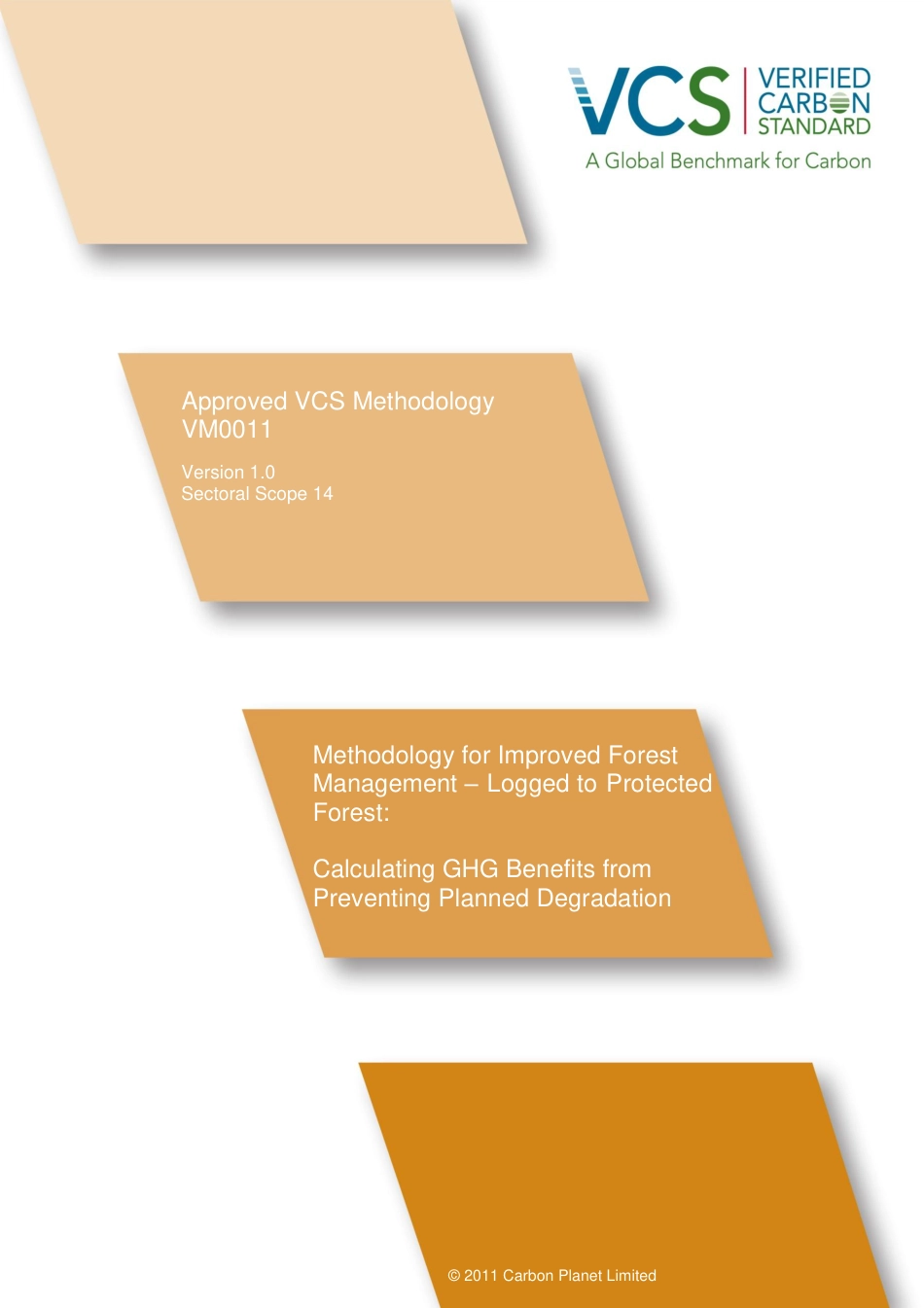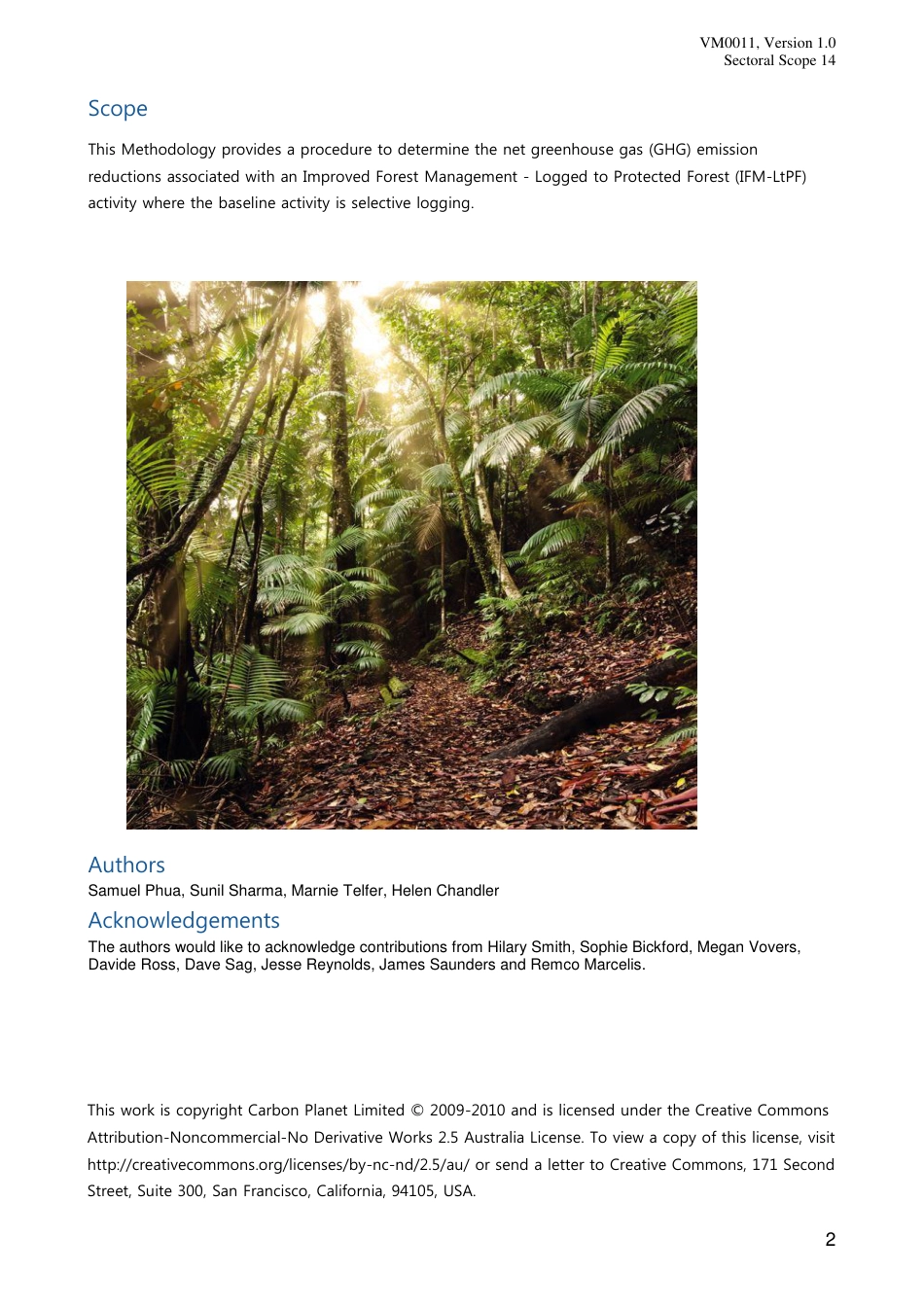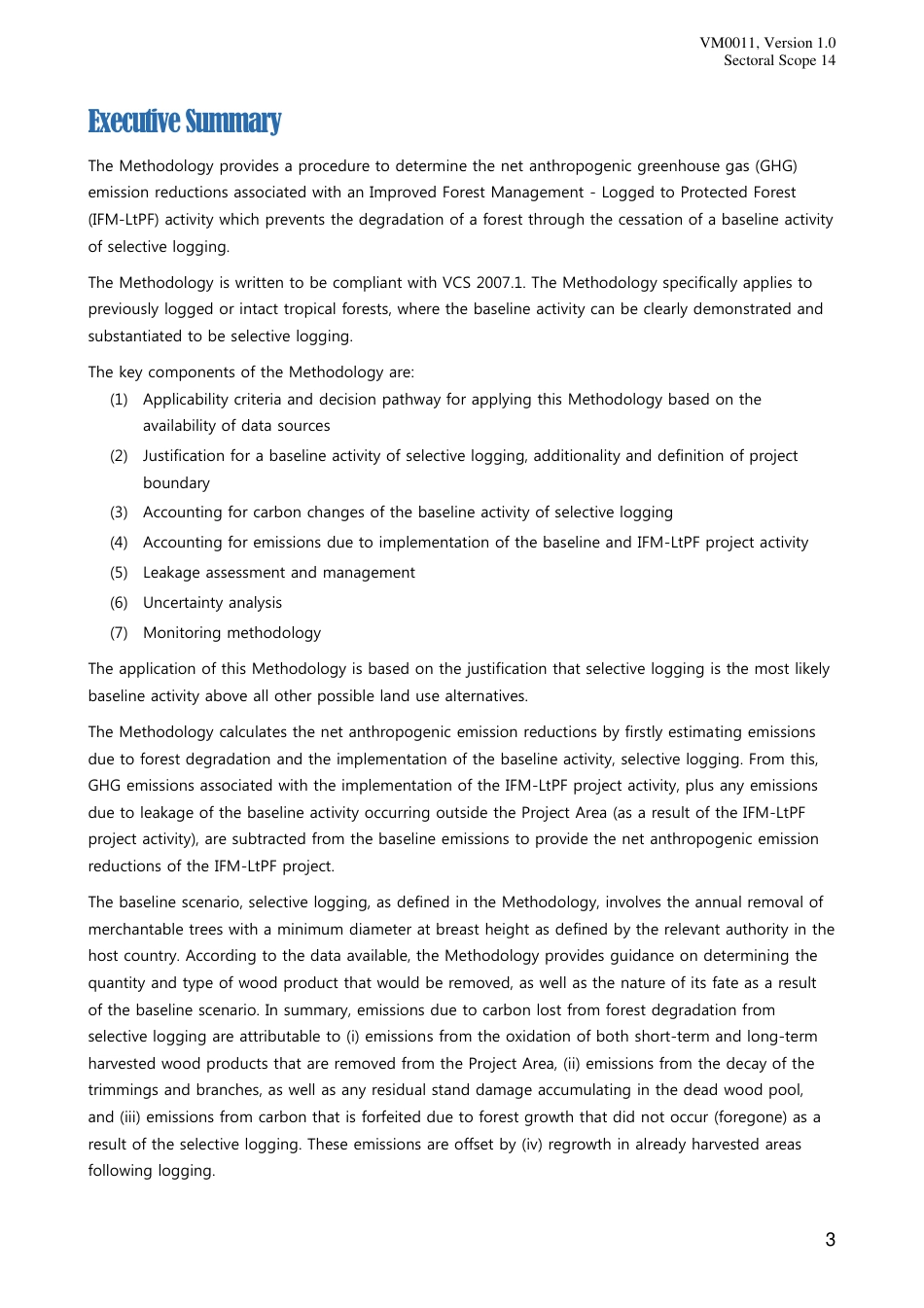Approved VCS Methodology VM0011 Version 1.0 Sectoral Scope 14 Methodology for Improved Forest Management - Logged to Protected Forest Approved VCS Methodology VM0011 Version 1.0 Calculating GHG Benefits from Preventing Planned Degradation Methodology for Improved Forest Management: Calculating GHG Benefits from Logged to Protected Forest Methodology for Improved Forest Management: Calculating GHG Approved VCS Methodology VM0011 Version 1.0 Sectoral Scope 14 Methodology for Improved Forest Management – Logged to Protected Forest: Calculating GHG Benefits from Preventing Planned Degradation © 2011 Carbon Planet Limited VM0011, Version 1.0 Sectoral Scope 14 2 Scope This Methodology provides a procedure to determine the net greenhouse gas (GHG) emission reductions associated with an Improved Forest Management - Logged to Protected Forest (IFM-LtPF) activity where the baseline activity is selective logging. Authors Samuel Phua, Sunil Sharma, Marnie Telfer, Helen Chandler Acknowledgements The authors would like to acknowledge contributions from Hilary Smith, Sophie Bickford, Megan Vovers, Davide Ross, Dave Sag, Jesse Reynolds, James Saunders and Remco Marcelis. This work is copyright Carbon Planet Limited © 2009-2010 and is licensed under the Creative Commons Attribution-Noncommercial-No Derivative Works 2.5 Australia License. To view a copy of this license, visit http://creativecommons.org/licenses/by-nc-nd/2.5/au/ or send a letter to Creative Commons, 171 Second Street, Suite 300, San Francisco, California, 94105, USA. VM0011, Version 1.0 Sectoral Scope 14 3 Executive Summary The Methodology provides a procedure to determine the net anthropogenic greenhouse gas (GHG) emission reductions associated with an Improved Forest Management...



